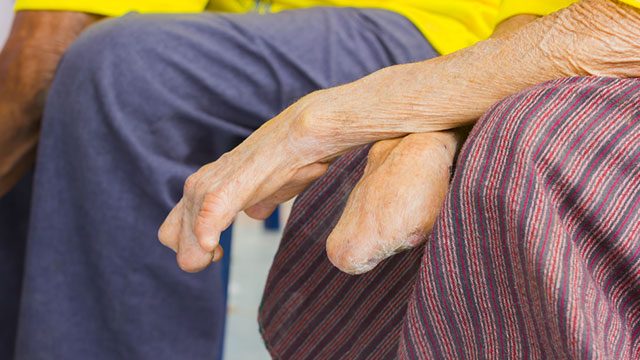SUMMARY
This is AI generated summarization, which may have errors. For context, always refer to the full article.

PUERTO PRINCESA, Philippines – The Palawan Provincial Health Office (PHO) has confirmed 8 cases of leprosy among indigenous people (IP) in Rizal town, 295 kilometers south of the provincial capital.
Dr Mary Ann Navarro, provincial health officer, said the leprosy cases were discovered during “Kilatis Kutis,” an awareness campaign on leprosy and other skin diseases organized earlier this month by the Municipal Health Office and Rural Health Unit (RHU) of Rizal.
“After subjecting 28 patients in skin-slit smear, 8 tested positive for leprosy,” she told Rappler by phone Thursday night, October 26.
Since the affected IPs belonging to the Palaw’an group live far from the health clinic, Navarro said their diagnosis came late. This prompted the PHO to bring the awareness campaign to other mountainous IP communities in southern Palawan in a bid to reach out other possible leprosy patients.
“We’re not singling them out as the only vulnerable group to this disease. In fact, anyone can have leprosy,” Navarro said.
With the medical advancements aimed at eradicating leprosy, Navarro said there’s no more need to isolate lepers, unlike in the past where affected patients from across the country were brought to the now-defunct Culion Leprosarium in the island town of Culion, a former leper colony in northern Palawan.
“They are being treated at the RHU,” the health official said, clarifying that new leprosy cases are not alarming as they do not pose danger to public health.
Leprosy is curable
According to the World Health Organization (WHO), leprosy is a chronic disease caused by slow-multiplying Mycobacterium leprae bacteria, which mainly affects the skin, the peripheral nerves, mucosa of the upper respiratory tract, and also the eyes.
Navarro said leprosy is curable, with multidrug therapy treatment lasting from one year to a year and a half.
The elimination of leprosy as a public health problem – defined as a registered prevalence of less than 1 case per 10 000 population – was achieved globally in 2000, the WHO said. More than 16 million leprosy patients have been treated with MDT over the past 20 years.
While leprosy is an infectious disease, Navarro said it’s not that contagious as it takes time before it can infect other individuals.
“It takes long exposure, close contact with the affected individual before you can contract the disease,” the health official added.
Although not highly infectious, Navarro said leprosy is transmitted via droplets, from the nose and mouth, during close and frequent contact with untreated cases.
The incubation period of the disease, on average, is 5 years, the WHO said. In some cases, symptoms may occur within one year but can also take as long as 20 years to occur.
Navarro advised individuals to immediately seek medical help if they spot leprosy’s main symptoms, such as “disfiguring skin sores, lumps, or bumps that do not go away after several weeks or months.”
Treating the disease in its early stages would keep it from progressing and causing permanent damage to skin, nerves, limbs, and eyes.
Navarro reminded the public to maintain good hygiene, with emphasis on taking a bath daily using clean water and changing clothes when it gets wet and dirty. – Rappler.com
Image of man with leprosy via Shutterstock
Add a comment
How does this make you feel?
There are no comments yet. Add your comment to start the conversation.